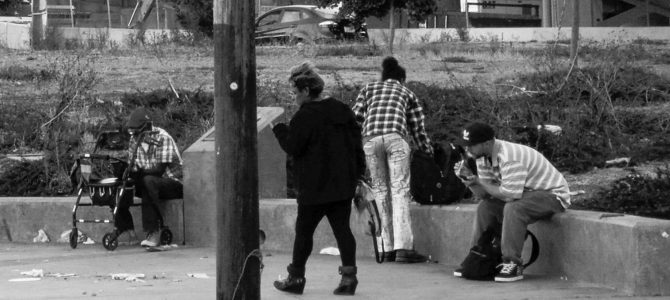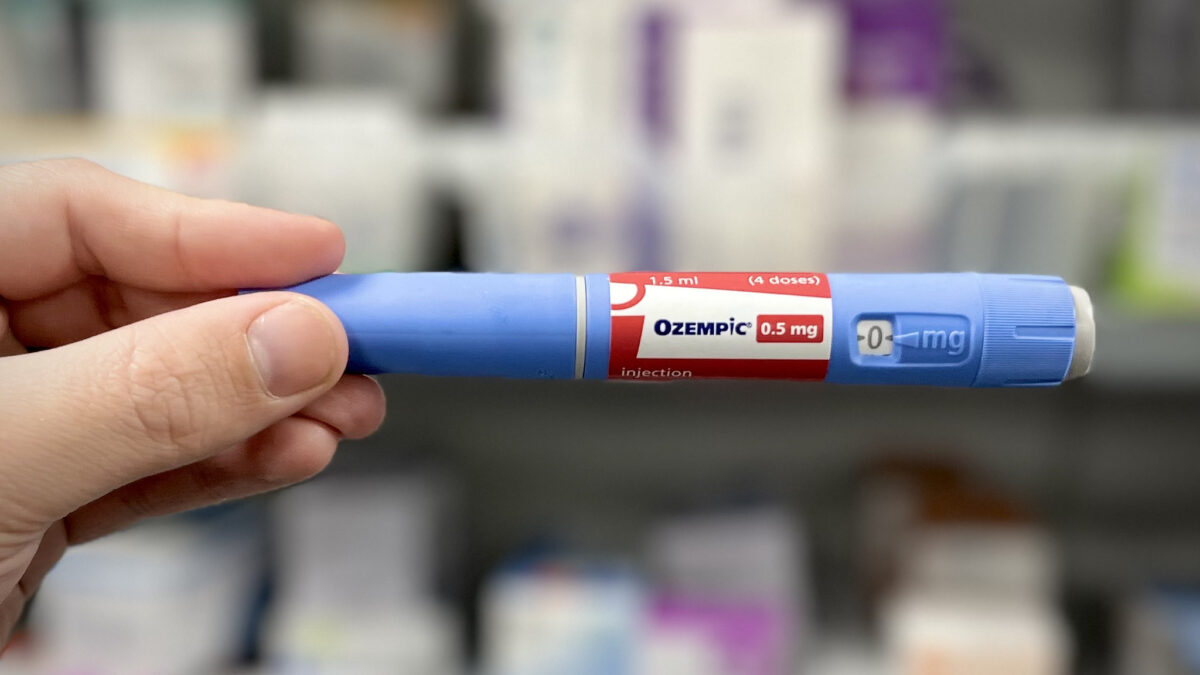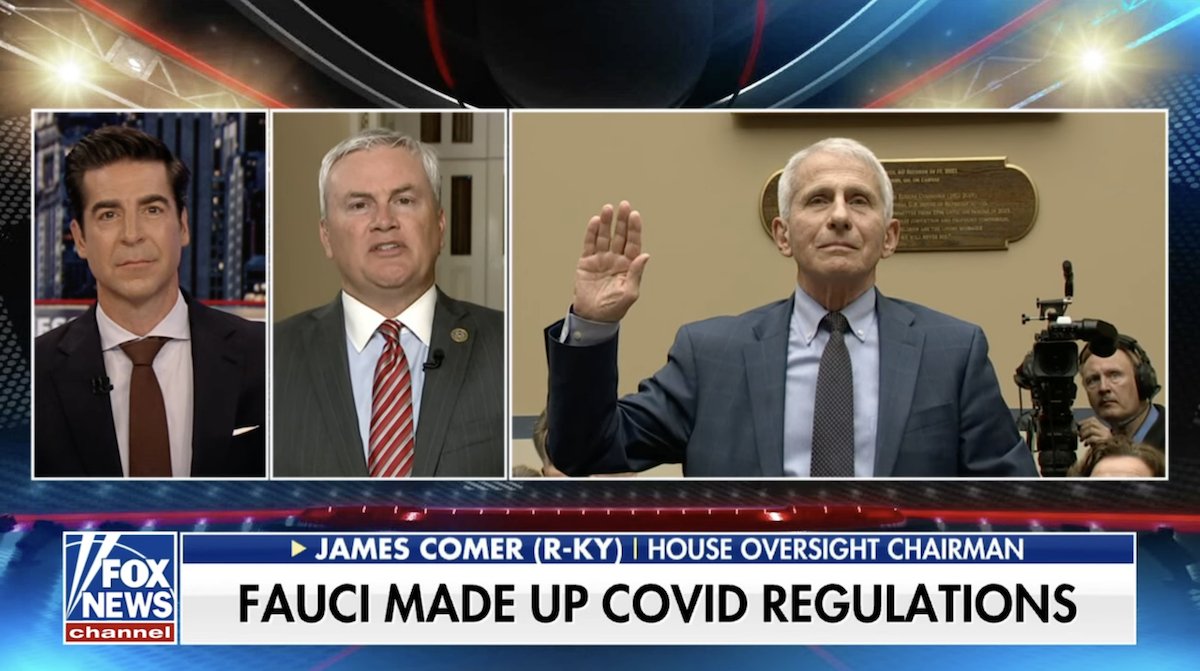
President Donald Trump has expressed willingness to interfere in the West Coast’s seemingly intractable “homelessness” problem: “Donald Trump said he might ‘intercede’ to ‘clean up’ homelessness in San Francisco and Los Angeles, noting that world leaders ‘can’t be looking at that.’”
“That,” our noxious streets, certainly are a shame, only some of us have forgotten how to feel shame — or compassion. The “homelessness”crisis, which is really the opioid crisis dressed up in class warfare language, is manufactured. It was created, to a large extent, by the local judiciary, but also abetted by state laws and executive inaction.
A casual look at the city might leave one with the impression that the war on drugs has failed, with the decrepit people wondering the streets of San Francisco in a various states of delirium with large patches of skin falling off of them can be taken for a proof. On that assumption, of the failure of the war on drugs, outgoing District Attorney George Gascon traveled to Portugal to take a look at how the Mediterranean nation successfully decriminalized all drugs. Gascon wants to replicate the Portuguese experience here.
It’s a cynical enterprise because, as locals can attest, hard drugs are pretty legal in our city. The questions we should be asking ourselves is how and why San Francisco has legalized deadly substances without first studying the experience of places like Portugal.
The Lawless Effects of Decriminalizing
In 2014, California voters approved Proposition 47, which dramatically reduced penalties for many criminal offenses. Co-written by Gascon, Prop 47 reduced small-quantity drug possession and use to a misdemeanor. Because San Francisco cops don’t bother booking people on such minor infractions, our junkies pose, poking veins, for the tourist iPhones. The San Francisco Police Department has been demoralized and lax about drug possession for decades, and why public deprivation became commonplace only in recent years is a bit of a mystery.
Where San Francisco went further than Portugal is in de facto legalization of dealing, or at least small-time dealing. When I feel like indulging in righteous outrage, I check out the Twitter feed of @SFPDTenderloin.
To inform community members about the criminal activity in this God-forsaken neighborhood, Tenderloin cops post pictures of men they arrest — together with the wads of money and drugs found on their bodies. There are a lot of familiar faces, as the detainees are typically released on stay-away orders after a short stint in jail.
The San Francisco Chronicle’s Phil Matier writes about the revolving justice system door for drug dealers:
Of the 883 drug sale arrests in fiscal 2017-18, 747 were forwarded to the district attorney’s office.
Prosecutors, however, say it takes an average of 244 days — about eight months — for a felony like selling drugs to make its way through the courts.
Often as not, the suspected dealers are released by a judge pending the outcome of their cases. And just as often, the dealers head back to the Tenderloin and start selling drugs again.
Of the 747 arrests referred to the D.A., 640 were prosecuted, while 107 were dropped for lack of evidence or some other reason.
Half are still making their way through the courts.
According to the analyst’s report, of the 173 convictions, 139 (80.3%) resulted in probation with some time served in county jail, and 32 (18.5%) resulted in longer sentencing to county jail.
Neither the D.A. nor the Sheriff’s Department had data on the actual time served.
We are not talking of unsanctioned marijuana here: that kind of dealing is also ignored these days. The vast majority of the arrests involve the sale of crack, heroin, and meth. If decriminalization of use can be justified on civil libertarian grounds — hey, it’s the addict’s body, and he can put whatever poison in it he wants — we can’t extend this logic to the sale of the harmful and potentially lethal substances to others. Yet that precise policy has been legislated from the bench in the Golden Gate City.
Career Opportunities for Illegal Immigrants
In a recent NPR interview, Mayor London Breed expresses frustration with the judicial brunch. Breed admitted there is very little she can do about dealing when the judges simply dismiss the cases before them. The mayor’s solution is to try to talk the dealers out of selling crack and heroin by… offering better-paid jobs.
If it doesn’t look like her strategy has yielded positive results, it’s probably because entry-level drug dealers are not necessarily in it for short-term financial gain. Observing economics of Chicago gangs in the ’90s, Steven Levitt concludes that street corner dealers make below minimum wage, but stick around for prestige and perceived opportunities. I suspect San Francisco’s cartel members have their own unique career goals.
Matier notes that San Francisco streets are divided between two cartels, and mentioned that some of the dealers are Hondurans. To find out about the Hondos, I contacted Thomas Wolf, who is in recovery now, but a year ago was a homeless addict, used by dealers to hold their money and dope. When we chatted online, Wolf confirmed that all but one of the dealers he knows are illegally present in the country, and live in the nearby sanctuary city of Oakland. Golden Gate City doesn’t deport illegals either, but perhaps the dealers don’t do the San Francisco thing where they eat.
The street homeless are by no means the only hard-drug users around here. The late public defender Jeff Adachi was a vocal and flamboyant opponent of war on drugs. Adachi passed away in February in the home of his mistress (we are all adults, right?). When a month later the results of his autopsy were leaked to the media, it turned out that a mixture of cocaine and alcohol in combination with pre-existing heart condition have caused the venerable public defender’s death. I suppose it would be more of a scandal if he were a DA.
After the journalist Bryan Carmody, who obtained the autopsy results, refused to betray his sources to the SFPD, his apartment was raided on judges’ orders. Policemen broke his door with a sledgehammer, kept him handcuffed for six hours, and left with his computers. The same cops who are asked to perform Sisyphean task of arresting dangerous criminals, only to see them back on the streets in a matter of hours, were dispatched by the city to curtail the First Amendment to cover up elites’ corruption.
San Francisco Is an Example of Failure
Since legalizing marijuana is well underway, there is all sorts of chatter about permitting the sales of other drugs. Magic mushrooms seem to be next in line —an exotic substance, to be sure. I doubt Psilocybin is easily found in the Tenderloin. Yet now more than ever it would be nice to start working from the opposite direction, to recriminalize and delegalize narcotics that should not be readily available.
It’s possible that San Francisco went about the legalization of heroin all wrong. Maybe we should have funded the rehabs first, and maybe we should have actually had a discussion. San Francisco’s political establishment, on the other hand, sort of made it legal, creating opiate slash methamphetamine never-land in the very heart of the city.
Our decrepit homeless population is often held up as an example of the failing war on drugs, including by likes of Gascon and Adachi, but the two should know better: San Francisco surrendered a long time ago. Our reality is not the failed war on drugs but a failed attempt at legalization.
In place of robust law enforcement, city leadership is sponsoring harm-reduction programs, the most visible feature of which are the syringes littering the streets. We frequently hear that the City Hall supplies police officers with Narcan, and non-profits educate addicts about how to watch out for each other to avoid overdose deaths.
City-sponsored rehabs are required to teach harm reduction. For an example, the website of the Center for Harm Reduction Therapy, a service partially funded by San Francisco Department of Public Health, describes their approach the following way: “Non-dogmatic: We do not ask that our clients adopt labels such as ‘alcoholic or addict,’ or to believe that they have a disease, in order to change or quit substance use.”
Although the organization insists that their practices are evidence-based, they link to no studies. Instead, they offer testimonials, including: “You can take care of yourself AND use substances.” (Jamie is always planting these little seeds.)
Drug User: Harm Reduction Only Enabled Me
Recovering drug addicts themselves often call harm reduction a different word: enabling. Here is what Wolf shared with me:
My opinion on harm reduction is that for me it would’ve and would continue to be a total failure. Harm reduction by nature is a way to enable or rationalize someone continuing to use drugs and remain in addiction. I knew a few people out there that would go to harm reduction meetings and within a couple days were completely binging on crack. In my opinion it is a weak response justified by protecting civil liberties when In reality all it does is make the person pushing the harm reduction model and those who support it feel better about themselves. The only way I was able to arrest my addiction was through faith and the 12 steps of AA and that program (which has worked for millions of addicts and alcoholics) demands complete abstinence from all mind altering chemicals.
Wolf told me he was finally able to summon the will to sober up when arrested. Locking up addicts to help them to get clean might be worth trying. The State of Rhode Island created a program for prison-based opiate treatment that has been demonstrated to be successful. In one population-wide study, the state saw a 61 percent decline in overdose deaths in former prisoners, and 12 percent decline in overdose deaths among general population once the program was implemented.
The results question the assumption that addicts have to volunteer for treatment for it to work. The reasons for addicts to stay out of treatment are aplenty. Again, Wolf:
What I was so surprised about is that when I went to rehab (Salvation Army ARC) is that they have open beds. And in many cases its because of a resistance to the ‘God’ thing. I’ll tell you this, I would’ve gone to Iraq and sat in a rehab there I was so desperate. Lol.
He also suggested that San Francisco should redirect the resources allocated to controversial shelters and “navigation centers” that have few rules and no sobriety requirements to rehabs. He adds:
The biggest thing I’ve noticed since I’ve started working in the TL after being a resident on the street last year there is that the focus is to get the dealers/drugs off the street but there is no clear plan from anyone on how to treat the homeless crisis which has now become an addiction crisis.
He’s right, and he’s right about people like me who mostly talk about shutting down the fentanyl bazaar. To clean up the mess we’ve created, San Francisco needs to start paying attention to both law enforcement and rehabilitation. And the rest of the United States should pay attention, because as long as heroin and crack remain legal in this area, they are legal everywhere else.
The homeless population of California is growing. New street dwellers are moving in daily as exasperated mothers from across the country who no longer know what to do with their sons put them on buses with one-way tickets to our open air opiate den.
We are in crisis, to be sure, but this is a manufactured crisis. The people who manufactured it, I am guessing, generally welcome executive action on the federal level, as long as it doesn’t come from Trump.
Our leaders know what to do: start enforcing the law, deport illegals (or at least the drug dealers among them), and put addicts in rehab. We can talk about better ways to achieve it, but we all know it’s necessary, and it should not require an intervention from the president of the United States.









